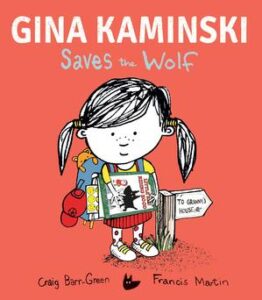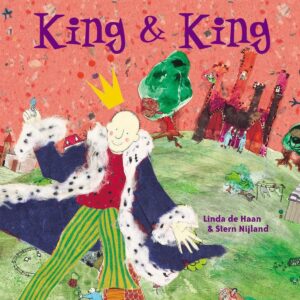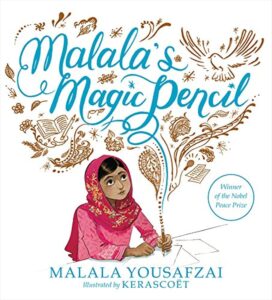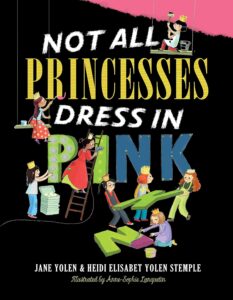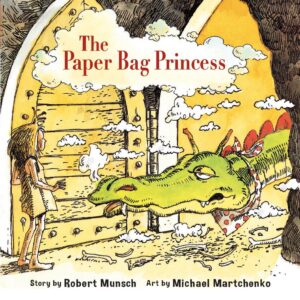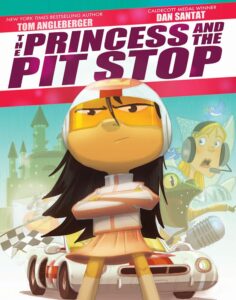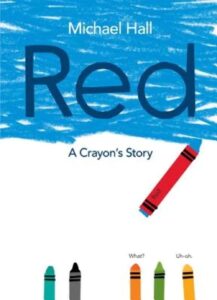Gina Kaminski Saves the Wolf
Author: Craig Barr-Green
Illustrator: Francis Martin
30 March 2024
Kane Miller EDC Publishing
32 pages
Book description from Goodreads: “An empowering retelling of Little Red Riding Hood about challenging the traditional narratives we are told, with a confident, autistic character at its heart.
Gina Kaminski is here to tell you three facts.
1 – Little Red Riding Hood is full of BIG mistakes.
2 – She is off to fairy tale land to fix them.
3 – She WILL save the wolf.
Who’s afraid of the big bad wolf? Certainly not Gina as she takes the narrative lead and tells the story in her own distinctive way. With fantastic illustrations from Francis Martin, and an innovative use of pictorial emoji language, this is the ideal book to empower every child to be the hero of their own story.”
Need some reviews for Gina Kaminski Saves the Wolf?
Educational Activities inspired by Gina Kaminski Saves the Wolf:
- Before Reading–From looking at the front cover:
- Look at the book’s cover. What do you think this story will be about? What clues does the cover give you?
- Based on the title, Gina Kaminski Saves the Wolf, what do you think will happen in the story?
- The cover and illustrations inside use emojis. How do you think emojis will be used to tell the story?
- The back cover mentions that Gina thinks the story of Little Red Riding Hood is full of mistakes and that she will fix them.
- What do you know about the story of Little Red Riding Hood?
- How do you think Gina will change this story?
- Why do you think Gina wants to save the wolf? What does this tell you about her character?
- What questions would you like to ask the author–or the illustrator!–before reading the book?
- After Reading–Now that you’ve read the story:
- How did you feel about Gina’s journey? Could you relate to her feelings and reactions?
- How did Gina challenge the traditional narrative of Little Red Riding Hood? What does this teach us about storytelling?
- How did the use of emojis enhance your understanding of Gina’s feelings? Was there a particular emoji that stood out to you?
- How does Gina’s interaction with the wolf change your perspective on “villains” in fairy tales?
- How does Gina’s neurodivergence influence her adventure in fairy-tale land? What strengths does she demonstrate?
- If you could change one thing about a classic fairy tale, what would it be and why?
- What was your favorite part of the book and why?
- Which illustration surprised you the most? Which did you like best?
- What was your favorite part of the story, and why?
- Would you recommend this book to a friend? What part would you tell them about first?
- Create Your Adventure Hat: Design and create your own adventure hat inspired by Gina. Think about what makes you unique and how you could represent that on your hat. Use craft supplies to bring your design to life.
- Be a Story Fixer: Choose another fairy tale you think could use an update. Write a new version where you fix any “mistakes” or update the story to reflect modern values. Share your new tale with classmates or family members.
- Wolf Awareness Poster: Research real wolves and their habitats. Create an informative poster that explains why wolves are important to the environment and how we can help protect them. Present your poster to your class or family.
- Sensory-Friendly Reading Nook: Inspired by Gina’s search for a sensory-friendly environment, design a cozy reading nook in your home. Consider what makes a space comfortable for you and try to include these elements.
- Emoji Emotions Diary: Keep an emotions diary for a week using emojis to describe how you feel each day. Reflect on what made you feel that way and if there’s a pattern to your emotions.
- Further Reading: Gina Kaminski Saves the Wolf takes us on a journey with Gina as she embarks on an adventure to right the wrongs of a classic fairy tale. This story, rich with themes of empowerment, courage, and creativity, invites us to think differently about the stories we know so well. Here’s a selection of picture books that challenge traditional narratives and celebrate diversity. Each book offers its own twist on friendship, adventure, and the importance of being true to oneself. Which of these stories are you eager to dive into next?


